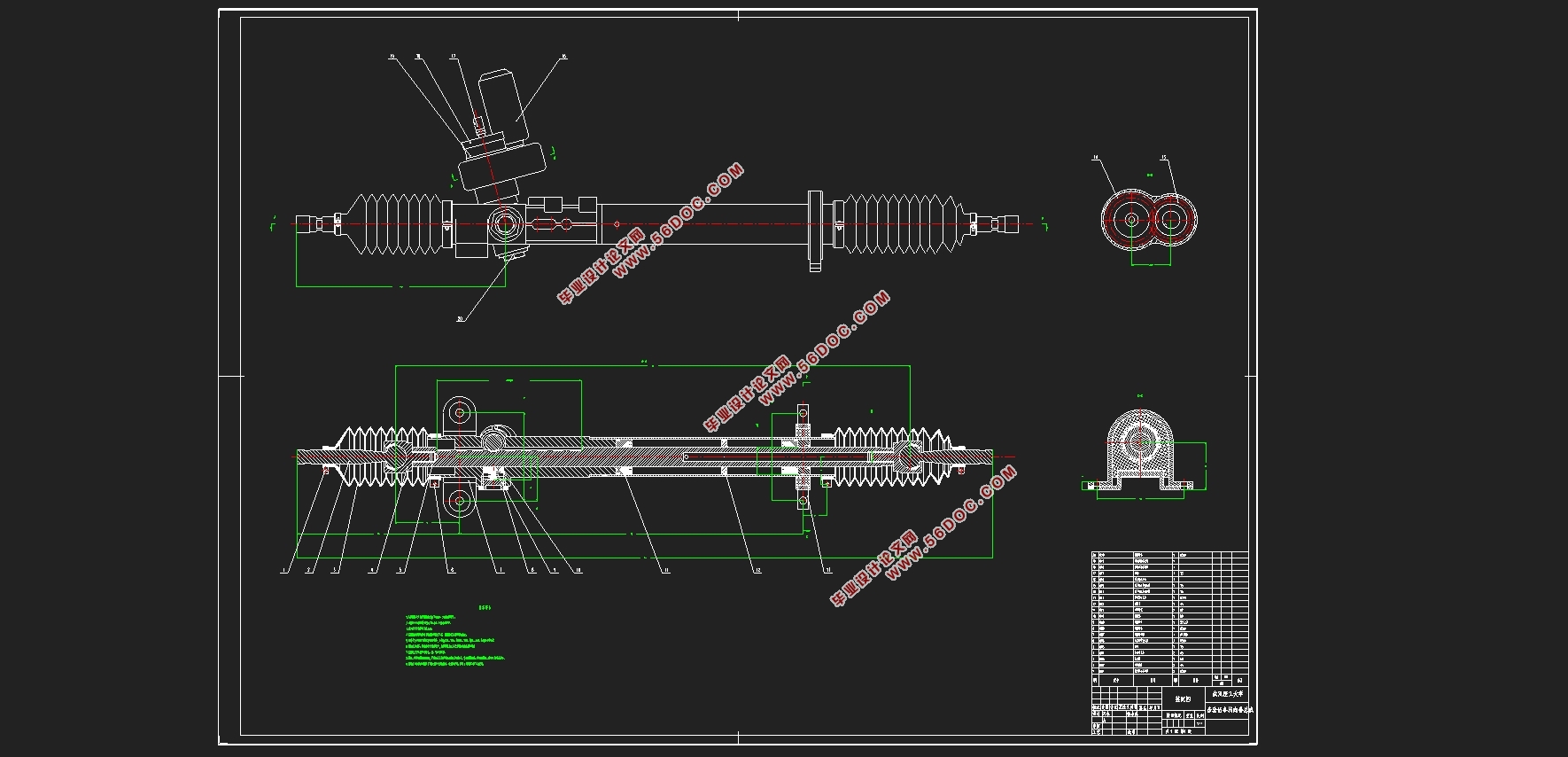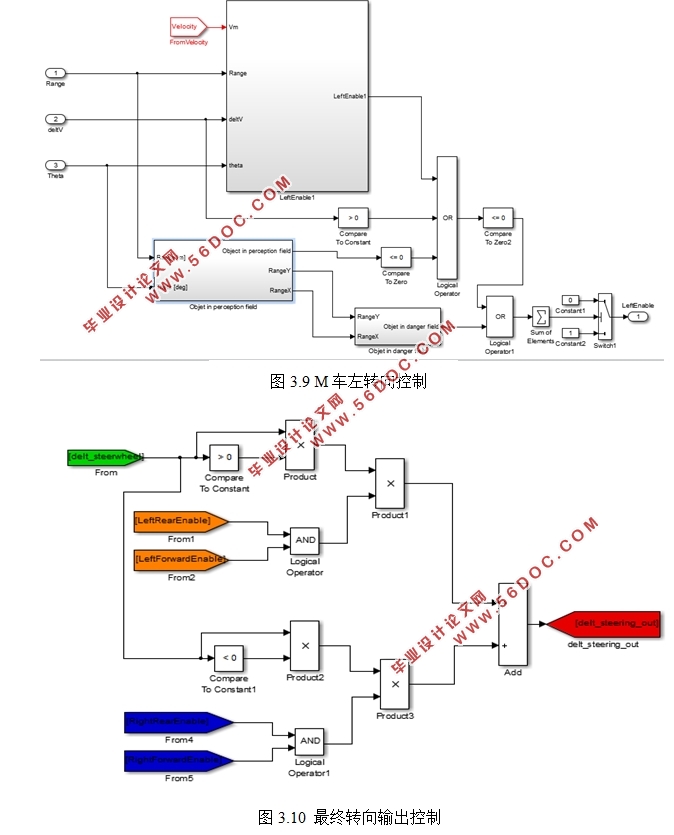车辆自动换道行为建模(含CAD零件图装配图)(任务书,开题报告,外文翻译,论文说明书15000字,CAD图5张)
摘要
自动驾驶汽车的发展正在如火如荼地进行,自动换道作为自动驾驶中典型的驾驶行为,具有非常重要的研究价值。自动换道的关键技术包括环境感知、换道策略以及执行器控制。环境感知是换道的基础,本文先通过对各类传感器进行分析,比较各类传感器的优缺点,结合实际情况选取激光雷达传感器作为感知工具,并装载于主车适当位置,对周围车辆进行感知。在对前人对换道模型的研究基础上,确定最小安全距离模型模型作为本文研究重点,建立了最先换道安全距离模型,包括加速阶段的换道安全距离以及跟驰最小安全距离在仿真模型中以方向盘转角作为主要控制,节气门开度控制或加速踏板作为辅助控制,在Prescan生成的simulink模型中建立安全换道控制模块、车辆动力学模型、驾驶员模型,以进行仿真验证。
本文根据目标车道相对于主车位置及相对速度的不同,设计了目标车道障碍车辆位于主车左后方,相对速度为2.5m/s、5.5m/s和8.5m/s三种情况进行验证,目标车道车辆位于左前方时由于位于左前方时的换道规则极为相似,为了便于观察比较换道策略的可行性,采取简化仿真过程,设计目标车道车辆位于主车侧后方、相对速度为20m/s进行验证,经仿真分析,验证了换道决策模型的可行性与安全性。
关键词:自动换道行为;最小安全距离;换道模型
Abstract
The development of smart driving is in full swing. Automatic lane changing is a typical driving behavior in smart driving and has very important research value. Key technologies for automatic lane change include environmental awareness,lane change strategy,and actuator control. Environmental perception is the basis of lane change. This paper first analyzes various types of sensors and compares the advantages and disadvantages of various types of sensors. In combination with the actual situation, it chooses a laser radar sensor as a sensing tool and loads it in the appropriate position of the master vehicle to sense the surrounding vehicles. Based on the previous research on the lane change model, the minimum safety distance model is determined as the focus of this study, and the first lane change safety distance model is established, including the lane change safety distance in the acceleration phase and the minimum safety distance following the simulation. In the model, the steering wheel angle is used as the main control, and the throttle opening control is used as the seconnd control. The model of the safety lane change control module is established using simulink, and the vehicle dynamics model and the driver model are imported into Simulink for simulation.
Based on the difference of the target lane with respect to the location and relative speed of the main vehicle, this paper designs that the target lane barrier vehicle is located at the left rear of the main vehicle with relative speeds of 2.5 m/s, 5.5 m/s, and 8.5 m/s. The lane changing rule for the left lane ahead of the target lane is very similar to that for the left lane. To facilitate the observation and comparison of the feasibility of the lane change strategy, a simplified simulation procedure is adopted to design the target lane vehicle to be located at the rear of the main vehicle with a relative speed of 20 m/ s verification and simulation analysis verify the feasibility and safety of the lane change decision model.
Keywords: automatic lane change behavior; minimum safety distance; lane change model



目录
摘要 I
Abstract II
第1章绪论 1
1.1研究的背景及意义 1
1.2 自动驾驶汽车研究现状 1
1.3 车辆自动换道行为研究现状 2
1.4 本文研究内容 3
第2章车辆自动换道行为关键技术 5
2.1 环境感知 5
2.1.1 激光雷达 5
2.1.2 相机 5
2.1.3 毫米波雷达传感器 5
2.1.4 超声波传感器 6
2.2 控制策略 6
2.3 执行器控制 6
2.4 本章小结 7
第3章自动换道决策模型的构建 8
3.1 车辆换道动机 8
3. 2 换道过程分析 9
3.3 对换道条件的判断 9
3.4 最小安全距离的定义 10
3.5 换道安全评价指标 10
3.6 安全换道模型的建立 12
3.6.1 M车与Fd车安全距离的确定 12
3.6.2 M车与Ld车安全距离的确定 14
3.6.3 安全跟车距离模型 15
3.6.4 最终安全换道距离的确定 15
3.7 换道决策规则 16
3.8 小结 16
第4章自动换道模型的仿真测试验证 18
4.1 软件介绍 18
4.2 搭建实验模拟场景 18
4.3 车辆换道决策模型的验证 19
4.3.1 M车与Fd车加速换道的验证 19
4.3.2 M车与Fd车加速换道仿真结果分析 26
4.3.3 M车与Ld车加速换道的验证 26
4.3.4 M车与Ld车加速换道仿真结果分析 29
4.4 小结 29
第5章结论与展望 31
5.1 结论 31
5.2 展望 31
参考文献 33
致谢 35
|







